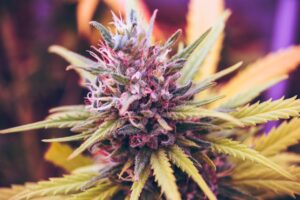High Stress Training (HST) is a popular plant training technique used by cannabis growers to maximize yields and enhance the quality of buds. By intentionally stressing your cannabis plants, HST encourages robust growth and increased flower production. Let’s explore the ins and outs of HST and how you can incorporate it into your cannabis cultivation journey.
What Is High Stress Training (HST), and How Does It Work?
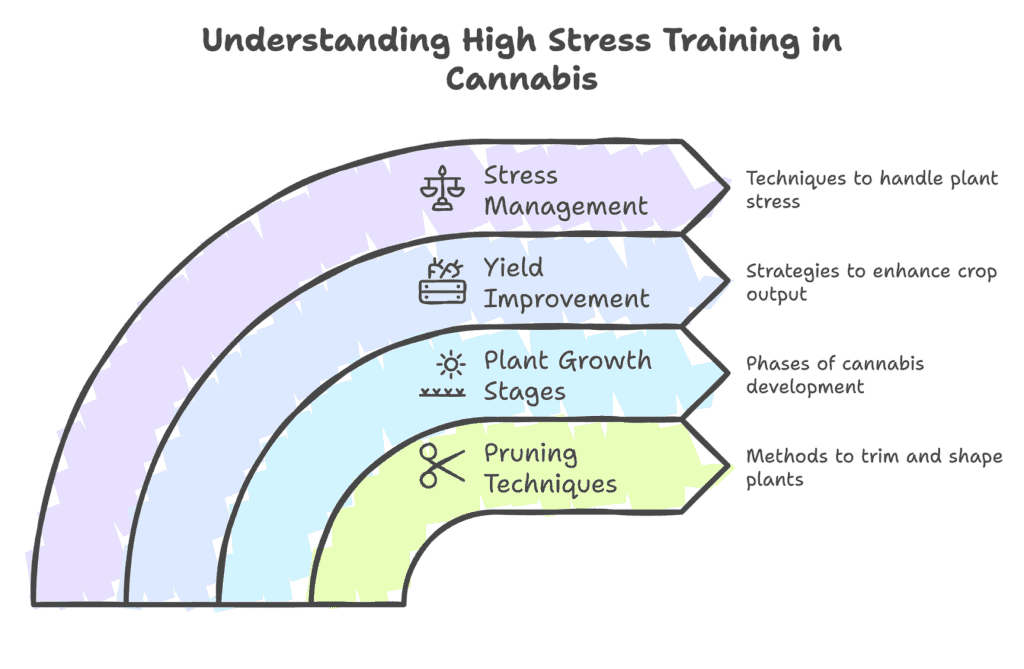
High Stress Training (HST) involves deliberately stressing cannabis plants to manipulate their growth patterns. Unlike Low Stress Training (LST), which uses gentle methods, HST techniques require direct intervention, such as cutting or bending parts of the plant. This training technique redistributes energy, improving the structure and yield of your cannabis plant.
How Does HST Affect Your Cannabis Plant?
HST impacts cannabis plants by encouraging bud site development, enhancing yield, and promoting vertical and horizontal growth. By pruning and defoliating, you allow your plant to grow healthier and better adapt to various stress training techniques. Ensure your cannabis plant has time to recover to avoid much stress. A healthy cannabis plant can thrive when trained effectively using HST techniques.
Techniques to Start High-Stress Training
- Topping: Cutting the main stem to encourage growth in multiple directions.
- Mainlining: Creating symmetrical branches for even bud distribution.
- Super Cropping: Bending branches to control growth and light exposure.
These methods work best during the vegetative stage, as this is when the plant can rebound quickly and establish strong vegetative growth before entering the flowering stage. For effective results, always monitor the plant’s recovery and avoid over-stressing your weed plant.
What Are the Benefits of High Stress Training?
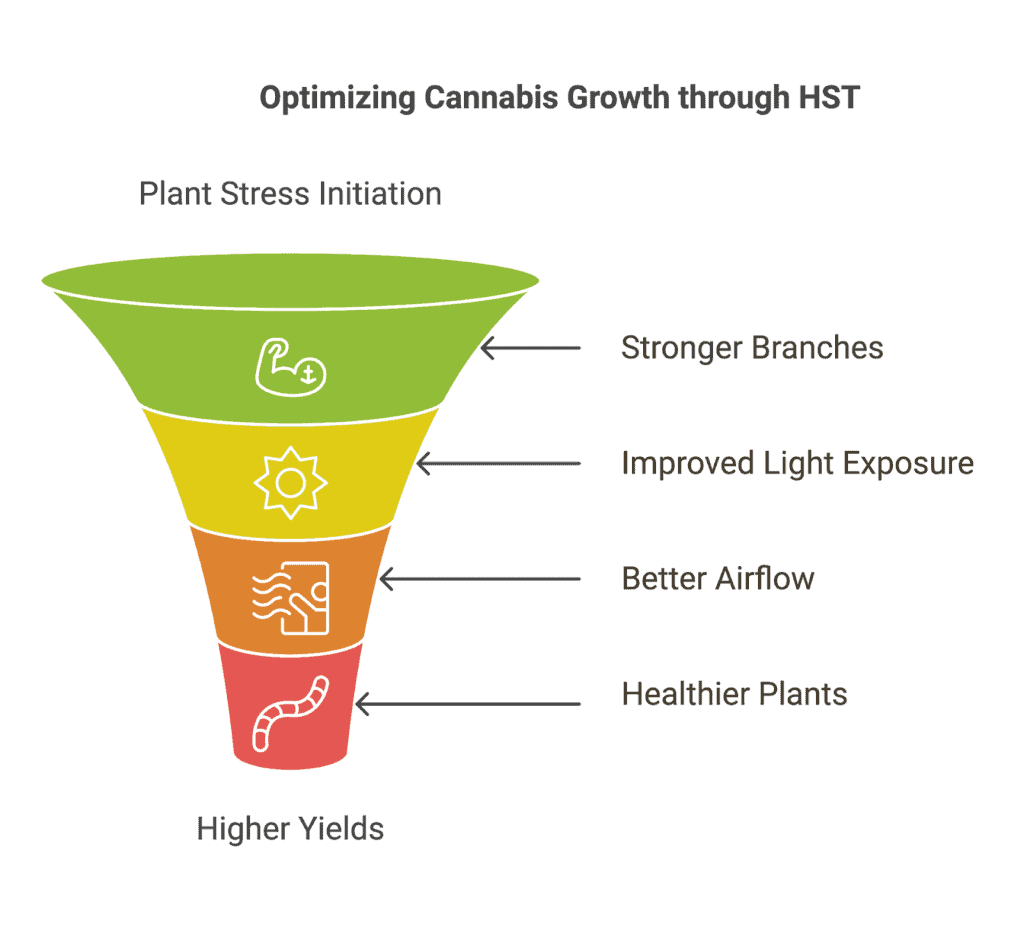
HST offers numerous benefits, from increasing yield to enhancing the quality of buds. By training your plants effectively, you improve light penetration and air circulation. High-stress training cannabis also encourages the development of healthier nodes and bud sites, leading to a more productive harvest.
Comparing HST and LST
| Aspect | HST | LST |
| Stress Level | High | Low |
| Techniques | Topping, super cropping | Tying down branches |
| Recovery Time | Longer | Shorter |
| Effectiveness | Higher yield potential | Moderate yield increase |
Combining HST and LST allows growers to optimize their cannabis cultivation by addressing both structural and growth needs. Begin with LST during early vegetative growth and introduce HST techniques like mainlining or super cropping as the plant matures. These combined training methods yield maximum results while preventing too much stress.
Why Growers Combine HST and LST
Many growers utilize both high-stress and low-stress training techniques for optimal results. LST provides the foundation for shaping the plant, while HST enhances growth in key areas like bud sites. This dual approach ensures balanced growth and healthier plants capable of producing higher yields.
How Do You Start High-Stress Training?
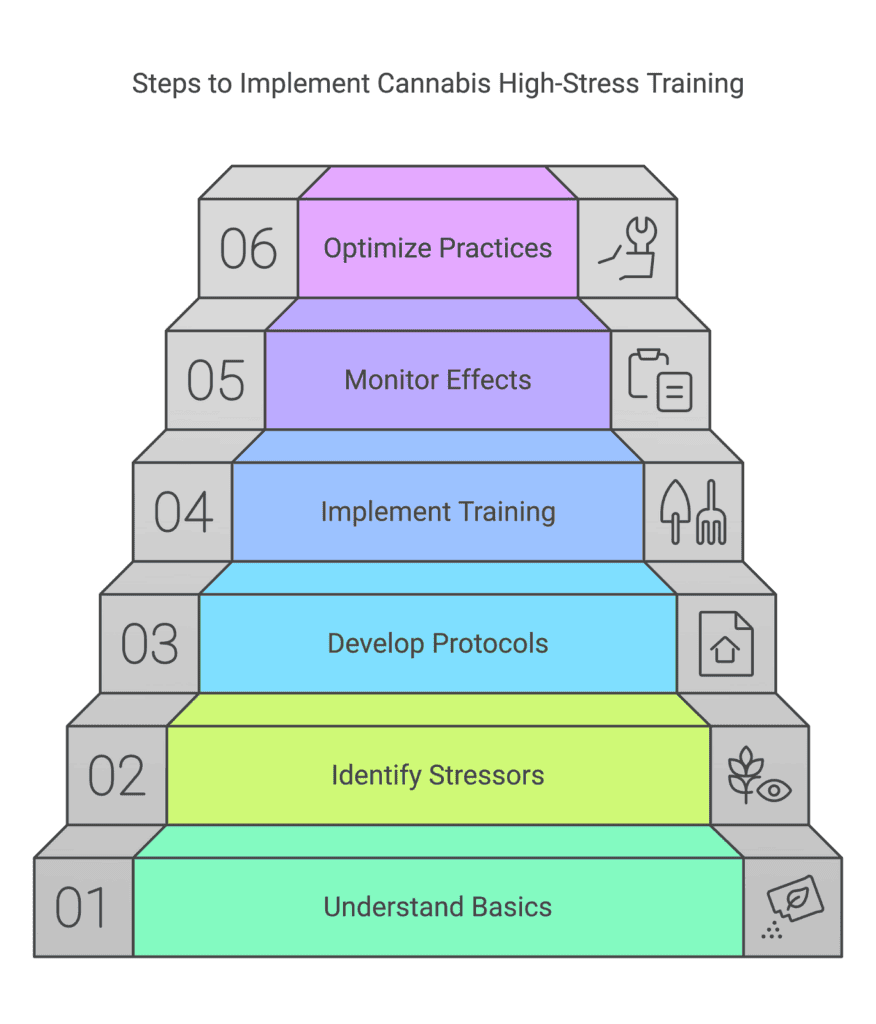
To start HST, ensure your weed plant is healthy and in the vegetative stage. Timing and technique are critical for successful plant training. Choose methods like topping to redistribute growth energy, super cropping to manage vertical growth, or pruning to enhance air circulation. Low-stress training can complement HST by preparing your cannabis plant for more intense training.
Steps to High-Stress Training
- Select a Technique: Start with techniques like topping or mainlining to promote balanced growth.
- Prune and Defoliate: Remove excess leaves to improve airflow and expose bud sites to light.
- Allow Recovery: Monitor your plant’s health and give it time to recover before repeating HST.
While high-stress training cannabis can improve yield, improper application may damage the plant. Always watch for signs of over-stressing, such as drooping leaves or slowed growth, and adjust your approach as needed. Proper recovery is essential for allowing your plants to rebound and thrive.
What Are the Best Practices for HST with Indoor and Outdoor Plants?
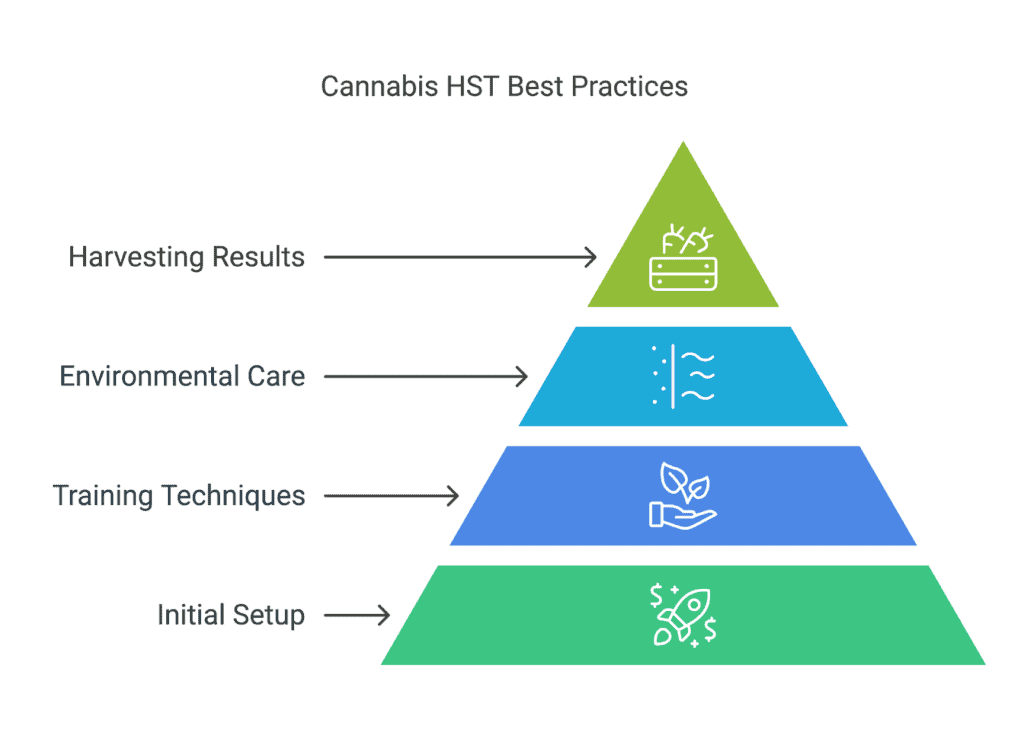
HST can be effective for both indoor and outdoor cannabis cultivation. Indoor growers benefit from controlled environments, while outdoor growers must consider weather and natural factors.
High-Stress Training for Indoor Plants
Indoor cannabis plants often require topping and super cropping to maximize limited space and ensure even light distribution. Growers can manipulate grow lights to support recovery after high-stress training techniques. Regular pruning and defoliation are critical for managing the plant’s vertical growth and improving airflow.
High-Stress Training for Outdoor Plants
Outdoor cannabis cultivation benefits from HST methods like mainlining and pruning to manage plant size and optimize exposure to natural sunlight. Protecting outdoor plants from weather conditions, such as rain or wind, is essential during recovery periods. Outdoor growers can use HST to increase bud production while managing the overall plant size for easier maintenance.
Combining LST and HST methods is an excellent way to enhance both indoor and outdoor plants. This integrated approach improves yield and plant structure without overwhelming the cannabis plant. Techniques like pruning, defoliation, and bending allow your plants to recover and grow stronger, whether in a controlled grow room or an open garden.
Timing Recovery Periods for Best Results
Giving plants enough time to recover between HST sessions is vital for healthy growth. Healthy plants respond better to stress and develop stronger structures, ensuring higher yields during the flowering stage. Whether you are training cannabis indoors or outdoors, monitoring recovery periods prevents over-stressing and promotes long-term success.
Conclusion
High Stress Training (HST) is a valuable method for cannabis growers aiming to improve yields and plant health. By mastering techniques such as topping, mainlining, and super cropping, you can maximize your plant’s potential during both the vegetative and flowering stages. Combining HST with low-stress training techniques creates a balanced, productive growth environment for healthy plants. Whether you grow weed plants indoors or outdoors, stress training cannabis requires patience and careful monitoring to ensure successful outcomes. With the right balance of techniques, you’ll enjoy healthier plants and a more abundant harvest.
Frequently Asked Questions
What is the difference between HST and LST?
HST involves high-impact techniques like cutting and bending, while LST uses gentle methods like tying down branches. Both aim to improve yields and plant structure.
Can I use HST on all cannabis plants?
HST is suitable for healthy cannabis plants in the vegetative stage. Avoid applying HST to weak or flowering plants as it can hinder growth.
How long does it take for plants to recover after HST?
Recovery time depends on the technique and plant health. On average, cannabis plants take 3-7 days to recover from HST.








